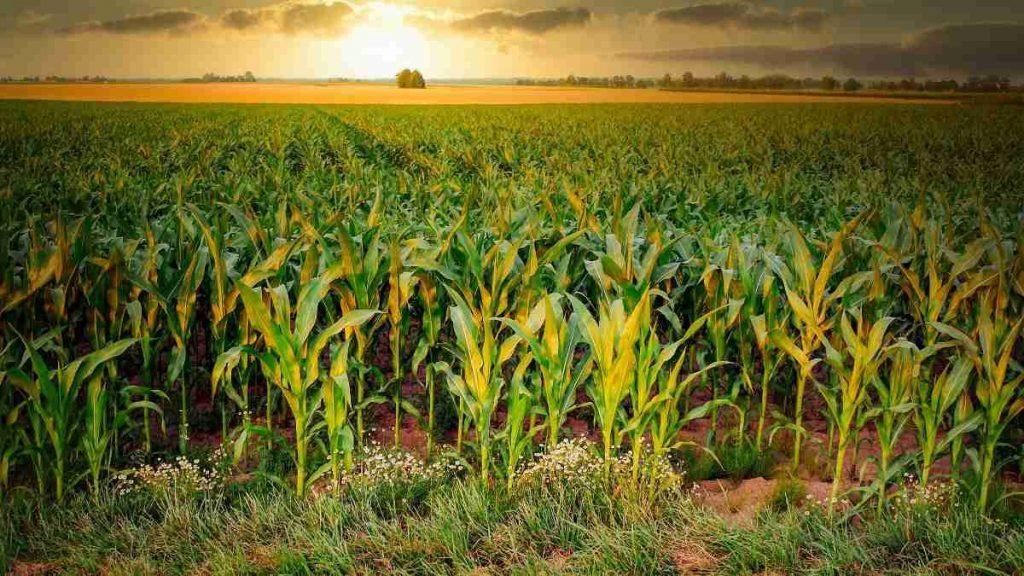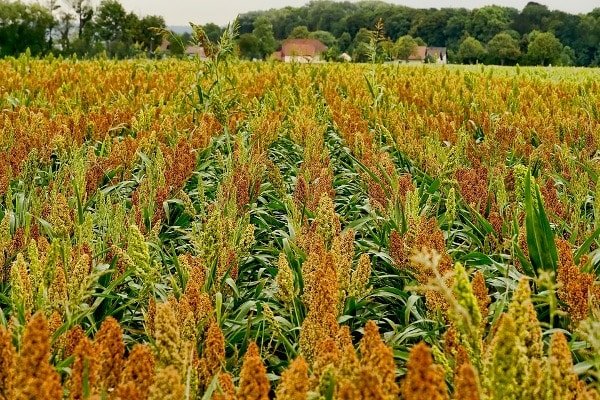Crops


Paddy Field
Organic rice production and farming is a holistic production management system, which avoids the use of synthetic fertilizers, pesticides, and genetically modified seeds.
The organic farming system relies on crop rotation, use of crop residues, animal manures, off-farm organic wastes, green manures, bio-fertilizers, bio-pesticides to maintain soil productivity and tilth to supply plant nutrients and to control insects, pests and weeds thereby combating environmental pollution.
This ultimately helps to maintain sustainable rice production and ecosystem.
It is also cost-effective, which helps our small and marginal farmers to sustain themselves in rural areas of the country thereby maintaining their social, cultural, and economic status.
The main rice growing season in the country is the 'Kharif'. It is known as winter rice as per the harvesting time. The sowing time of winter (kharif) rice is June-July and it is harvested in November-December.
Ground Nut
Organic peanuts are an excellent source of vitamins and minerals.
They have lots of manganese. Peanuts are relatively high in magnesium and phosphorous, as well as vitamin E and niacin (vitamin B3).
Organic production of peanuts relies on management techniques that replenish & maintain long-term soil fertility by optimizing the soil's biological activity.
This is achieved through crop rotation, cover cropping or composting & using organically accepted fertilizers that feed the soil and provide plants with nutrients.
In addition to producing high-quality crops, healthy & well-balanced soil can help plants develop natural resistance to insect pests and diseases.
In Tamil Nadu, groundnut is grown in five seasons viz., Adipattam (June-July), Karthikaipattam (Oct-Nov), Margazhipattam (Dec-Jan), Masipattam (Feb-March) and Chithiraipattam (April-May).




Black Gram
Black gram is one of the important pulses crops grown throughout India. Black gram is resistant to adverse climatic conditions and improves soil fertility by fixing atmospheric nitrogen in the soil.
Organic Black gram holds a high protein value than most legumes. It is also an excellent source of dietary fiber, isoflavones, vitamin B complex, iron, copper, calcium, magnesium, zinc, potassium, and phosphorus which offers a myriad of healing health benefits.
It Improves Digestion, Protects the Heart, Boosts Energy, Improves Bone Health, Strengthens the Nervous, System, Helps Manage, Diabetes, and Reduces Pain And Inflammation, It is Good For Skin And Hair.
Black gram is grown in both Kharif and spring/summer seasons.
Corn
Organic corn is a vitamin C, magnesium-rich food, and provides a good amount of daily dietary fiber.
It is a good source of Antioxidants and maize kernels are a good source of carotenoid antioxidants, which are known to support the immune system.
We do not use conventional commercial fertilizers, synthetic pesticides, synthetic pesticides, and synthetic growth regulators.
Organic corn is rich in vitamin C, an antioxidant that helps protect your cells from damage and wards off diseases like cancer and heart disease. organic Yellow corn is a good source of the carotenoids lutein and zeaxanthin, which are good for eye health and help prevent lens damage that leads to cataracts.
Maize or Corn can be grown in all seasons viz; Kharif (monsoon), post-monsoon, Rabi (winter), and spring.




Millets
The millets are a group of variable small-seeded grasses. They can play a pivotal role in preventing & curing several health issues.
Millets contain an incredibly nutrient-rich composition. Enriched with the goodness of nature, millets are a rich source of fiber, and minerals like magnesium, phosphorous, iron, calcium, zinc & potassium.
Each millet is three to five times nutritionally superior to rice & wheat in terms of proteins, minerals, and vitamins.
Organic millets are rich in vitamin B, calcium, iron, potassium, magnesium, zinc, and also gluten-free thus millets are suitable for people with allergies to wheat.
Maximum millet cultivation happens in the Kharif period, i.e. during the monsoon season. In areas that receive more than 800mm of rain, many millets can be cultivated in the second season, i.e. as a rabi crop (during the post monsoon, early winter months).


We’ll make sure it’s an adventure you will remember forever!
Contact Us
Anandavanam,
Arumbakkam Village,
N N Kandiagi Main Road,
Kanagamma Chathiram,
Thiruthani Taluk,
Thiruvallur,
Pin code- 631204
Copyright © 2022, Anandavanam